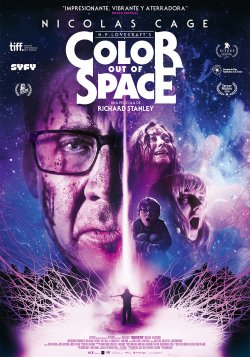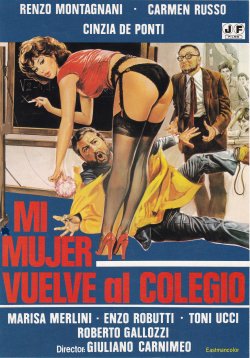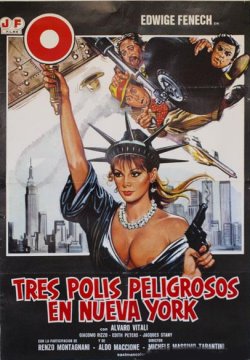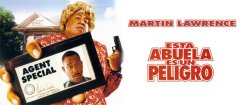 INFORMACIÓN EXCLUSIVA
INFORMACIÓN EXCLUSIVA
SPECTREVISION STATEMENT...
“From the moment SpectreVision was formed, I’ve been obsessively searching for a faithful HP Lovecraft adaptation.” - Daniel Noah, SpectreVision Co-Founder / Partner SpectreVision is a massive fan of HP Lovecraft. So much so, that this reverence has led to an inexhaustible 9-year journey to the making of COLOR OUT OF SPACE, based on H.P. Lovecraft’s novella, THE COLOUR OUT OF SPACE.
Although numerous H.P. Lovecraft adaptations have been done over the years, it’s easily argued that many of these adaptations have done a disservice to the legacy and memory of the late Lovecraft’s works.
“Although H.P. Lovecraft has been adapted both directly and indirectly over the years, rarely has there been a faithful adaptation that truly captures the cosmic dread that he was known for,” says Noah. Many of COLOR OUT OF SPACE’s predecessors fall into the horror comedy genre – something Lovecraft purists decry is in direct opposition to the complete and utter lack of levity in his work. According to Noah, “There’s nothing funny about Lovecraft.”
In the unrelenting search to find a work worthy of the time and energy SpectreVision is known for devoting to each film, the team happened upon LOST SOUL – THE DOOMED JOURNEY OF RICHARD STANLEY’S ISLAND OF DR. MOREAU at a genre film festival in 2014. LOST SOUL tells the tale of director Richard Stanley’s illfated – and well publicized – ousting from his dream project, THE ISLAND OF DR. MOREAU, and his subsequent self-banishment from all things Hollywood. Ironically, the film about Stanley’s ostracism would ultimately be the catalyst to bring Richard out of hiding and back into the spotlight – and SpectreVision’s crosshairs.
As with many of the best partnerships, SpectreVision and Stanley were introduced by a mutual friend. The friend knew the team had been on the hunt for the perfect Lovecraft adaptation, and this same friend also knew that Stanley had co-written (with Scarlett Amaris) an adaptation of THE COLOUR OUT OF SPACE that was so accurate, so intense, and so faithful to the source material, that every other producer who had been approached was afraid to get involved. “Hearing that was like catnip to me,” states Noah, who got a hold of the script immediately.
All four partners – Daniel Noah, Josh Waller, Lisa Whalen, and Elijah Wood – agreed that the script was incredible – everything they had been looking for in a Lovecraft adaptation, with all the elements that make a SpectreVision film, well, SpectreVision.
The team knew they had to make it a reality.
The most magical element of it all was Richard Stanley. He had been absent from the landscape for many, many years, but the SpectreVision team all vividly remembered seeing THE ISLAND OF DR. MOREAU in theaters growing up, and they remembered the story of what happened to Stanley on that film. Richard had become an incredibly tragic and sympathetic figure to so many in the film community, and Richard’s brilliant script presented the perfect opportunity to not only make the first true adaptation of Lovecraft, but to bring back an iconic and important filmmaker who had been so publicly wronged.
Before meeting for the first time, SpectreVision had been warned to be cautious about getting involved with Stanley because he was “crazy,” a moniker commonly reserved for those who Hollywood has cast aside. Within moments of meeting Stanley over a casual lunch, they quickly realized that he was not, indeed, crazy after all – in fact, quite the opposite was true. The team immediately deciphered that what appeared to be the rantings and ravings of a lunatic were, in fact, the highly organized thoughts of a genius. In that moment, they knew everything they needed to know about Stanley. The desire to make COLOR OUT OF SPACE with him was palpable.
As Noah states, “He’s not crazy, he’s just smarter than everyone else. For those that can’t keep up with him, it may seem like chaos. However, if you put in the effort, what you quickly realize is that his brain is almost writing novelistically as he speaks with themes, motifs, subplots, and narratives that dovetail and reflect on each other.”
Although SpectreVision’s commitment to make COLOR OUT OF SPACE with Stanley was solidified in that first meeting, there was one last elephant in the room before they could move forward. The question that would be on everyone’s mind when pitching the project, and, one day, premiering the film – what had Richard Stanley been doing all this time?
When they asked the question, no one could have anticipated Stanley’s response. Without pause, Stanley said, “Well, I’ve been looking for the Holy Grail.” The team laughed. “No, really, what have you been doing?” They asked. To which Richard repeated his answer; “I’ve been looking for the Holy Grail.” That’s when they realized he was serious.
Richard went on to explain, in incredible detail, his belief that the Holy Grail was a black stone Aerolite that was the fragment of a meteorite that had slammed into earth many, many, years ago which had potentially been the basis of a number of religions.
He then produced from his pocket a pair of black stones that were, in fact, meteorite fragments. To prove his point, he rubbed them together to show how they “bled” when friction was created between the two stones. According to Noah, “…he literally made two dry stones “bleed” in front of my eyes.”
It seemed like magic, but Stanley explained that these were merely alien metals that secreted some sort of high-density substance in the iron family. It was not lost on SpectreVision that this was a man who was proposing to make a film about a meteorite slamming into a family farm on planet Earth that brings an almost spirituallike change, for the worse, in this case, to the humans and all life forms that it comes into contact with. And here he was, after all these years, sitting in a café, explaining that the Holy Grail itself may have been a meteorite that changed humanity in so far as it led to the birth of many organized religions that survive to this day.
In that moment, Richard Stanley made reality appear just as magical as H.P. Lovecraft’s fiction.

![]() CÓMO SE HIZO
CÓMO SE HIZO![]() VIDEO ENTREVISTAS
VIDEO ENTREVISTAS











